Ermionida is a municipality in the Argolis regional unit, Peloponnese, Greece. The seat of the municipality is the town Kranidi.
Ermioni is a small fishing town of Ermionida (Argolis) at the east of Peloponnese. The traditional taverns, the cafes, the paved streets, the beautiful houses and the crystal clear beaches around this area are some of the reasons this town is an interesting summer destination of Peloponnese. While travelling around this area you will have the chance to admire the olive and the pine trees and plenty of bays with turquoise water but also plenty of climbing crags.
 The rock climbing around Ermionida and generally the Argolis region is all on excellent solid grey limestone. The majority of the routes are single pitch sport climbing routes, though there are some trad climbing routes as well. However all of the climbing areas are only partially developed, which means there is a massive opportunity to establish new routes in the area.
The rock climbing around Ermionida and generally the Argolis region is all on excellent solid grey limestone. The majority of the routes are single pitch sport climbing routes, though there are some trad climbing routes as well. However all of the climbing areas are only partially developed, which means there is a massive opportunity to establish new routes in the area.
The Argolis area claims to receive over 3,000 hours of sunshine per year and is a popular holiday destination. It also means that it is possible to rock climb virtually all year round in the Argolis region, even in the hot summer months as some crags such as Didima are at an altitude of over 1,000m.
How to reach Ermionida
The best way to get to the Ermionida region is to fly into Athens and then hire a car and Ermionida is then roughly 3 hours drive from the airport. In any case, you will need a car to visit the majority of the crags as they are spread out all over Ermionida, and there is no public transport that will bring you nearby to any of the crags.
In case you want to reach the area by public transport you have the following options:
- By Bus Get the KTEL from Athens with direction Nafplio city or Kranidi. For more info you can check the KTEL Argolis website.
- By BoatGet the “Flying Dolphin” boat with direction Ermioni. For more info you can check the Hellenic Seaways website.
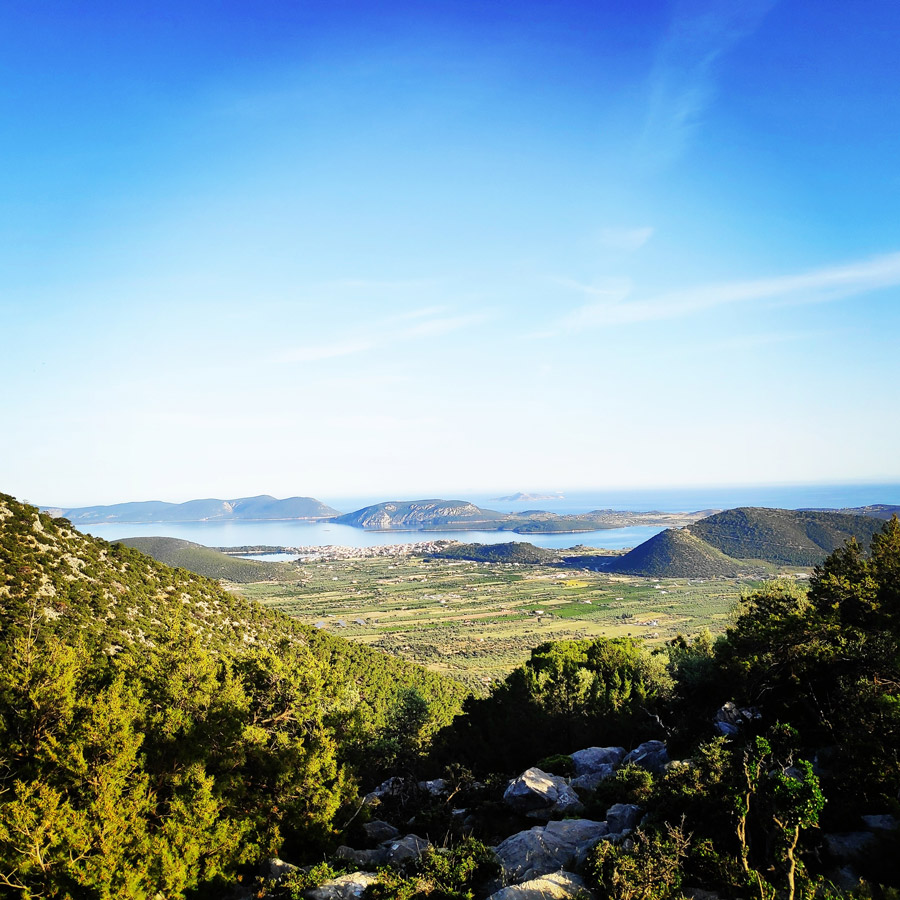
Where to Stay
In Ermionida the rock climbing areas are spread out in the various villages, such as, Ermioni, Thermisia, Iliokastro and Kilada, which means having a car is necessary to visit a number of different crags. The best places to stay are either at Ermioni, Porto Heli or the campsite in Thermisia. In Ermionida there are various hotels for all kind of budgets and in Ermioni there are more B&B type of accommodations.
Of course, there are plenty of houses that are rented our via Air B&B.
For the ones that would like to try wild camping, there is plenty of open space, and especially in Katafyki ravine. Though, the only inconvenience is there is no running water almost every season of the year.
Guidebooks and Online Info
Although there are not many detailed guidebooks about climbing in Ermionida, there are two main ones that are very detailed and informative.
Bolt Products guidebook by Jim Titt
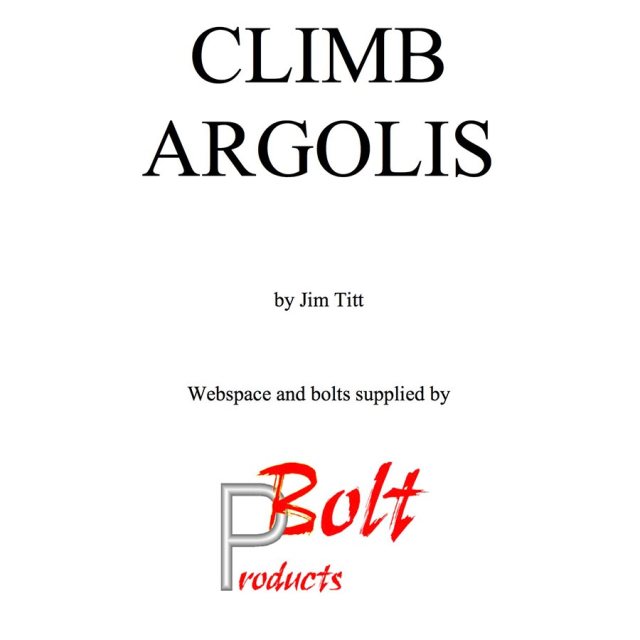
The first guidebook, was created by the person that is responsible for almost all new crags in Argolis, Mr. J. Titt. He basically, discovered, first climbed and bolted almost all crags in Ermionida, such as Didima Crag, Katafyki ravine, Pillars of the Wind, Franchthi caves, Castle of Thermissia etc.
Bellow you can find the guidebook by J. Titt
Argolis Rock Climbing Guidebook

Another great guidebook that covers 10 climbing areas in Argolis region plus 2 bonus crags of Korinth and Akropolis near Athens. The 10 climbing areas in the Argolis are: Nafplio, Vivari, Ortholithi, Didimon, Didimon Hinterland, Frachti, Katafiki, Pillars of the Wind, Thermissia, and Methana. You can find this guide book on the link bellow:
Crags in Ermionida region
- Didyma
- Pillars of the Wind
- Katafyki Ravine
- Thermisia Castle (Kastro Thermisias)
- Caves of Frachti
- Rock of Ages
- Dardiza Crag
Trad/Mountaineering climbing in Ermionida region
Climbing in Didima/Didyma
The Didima climbing crag, is one of the top sports cliff in Greece. Excellent access, superb rock, magnificent views, great routes and a perfect climate for climbing on the hot summer afternoons make this the most popular cliff by far.
The cliff lies at the summit of the mountain of the same name and owing to its altitude 1.100m is around 10°C cooler than on the coast, and in the summer months is shaded after midday. Added to the cooling sea breeze this means that it is always agreeably cool.
The rock here is not as sharp as many areas allowing one to push the technical side, which is fortunate as the climbing is on steep or lightly overhanging walls and requires good technique. The cliff is divided into 2 sectors, Winter and Summer with sector Winter being less shaded, which is why there are no routes as yet on it!
Read detailed guide about climbing in Didima/Didyma here:
This crag is family friendly and it has more than 70 routes. In addition, there are easy routes for beginners and more demanding routes for intermediate and advanced climbers. Almost all routes have been opened and bolted by J. Titt and I. Zaczek.
More a technical climbing area on steep grey walls the development so far has concentrated on the first 250m of cliff (sector summertime) giving around 50 routes in the 4, 5 and 6th grades with potential for about the same number in the higher grades. The next 350-400m of cliff offers an abundance of lines, probably in the 6th and 7th grades and up to 40m long but has yet to be developed.

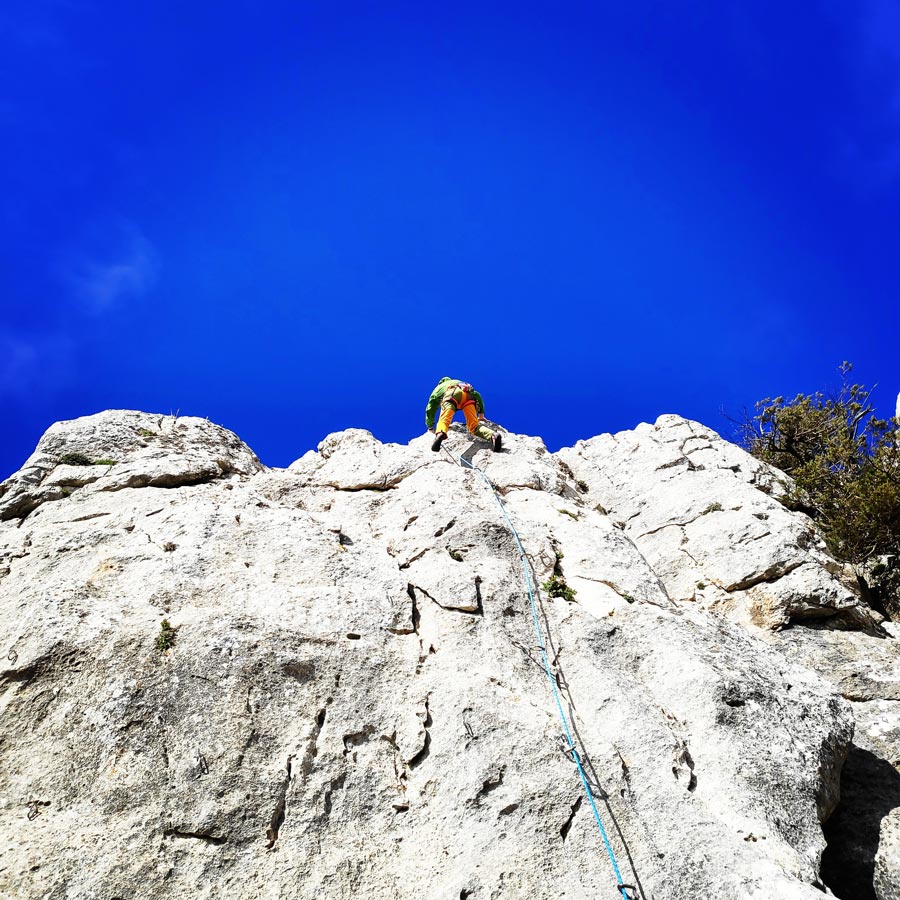



Climbing in Katafyki Ravine/Gorge
Katafyki gorge is a beautiful natural landscape, located between the villages of Fournoi and Ermioni. It consists of a protected area of outstanding beauty and a wild life refuge that attracts the most demanding visitors. Hikers can leave their car in Ermioni and take the path that passes through the dense vegetation of pines, laurels, myrtles, shrubs and other endemic plants. The sound of the running water and the presence of rare animals and wild birds give the impression of an earthly paradise. The imposing rough rocks host mysterious caves, one of which is said to consist of the entrance to the underworld, the point from where Hercules found Cerberus.
Read detailed guide about climbing in Katafyki here:
Parking directly under the cliff so no walk in! All year climbing as the main wall is shaded after midday. 45 routes here of which 7 are single pitch adventure routes,12 are multi pitch adventure up to 5 pitches 123m, 23 are single pitch sport routes and 3 are multi-pitch bolt routes up to 6 pitches 150m. All adventure routes have bolted belays and abseil pistes are equipped. Walk off o.k. in rockboots. Grades 4c to 7c+





Climbing in the Castle of Thermisia (Kastro Thermisia)
An imposing cliff overlooking the coast and the village of Thermisia. Close inspection reveals an even more daunting prospect than a first view would suggest. Big, red, bulging and holdless seems to sum it up.
This is actually a great place to visit with a super view over the coast, a ruined castle to explore and a real classic climb, New Order which takes you up an unfeasibly overhanging wall at only 6a. The cliff is floodlit during the summer months and this would give a superb photo opportunity!
In my opinion the grades are somewhat downgraded, and the routes are often hard to start! At this point, I also have to pay respect to J. Titt that took care of almost all routes on this climbing crag.
Read detailed guide about climbing in the Castle of Thermisia here:
The castle of Thermisia appears in the written sources, as Trémis, for the first time in 1347, in the will of Gautier II de Brienne, Count of Lecce, de jure Duke of Athens, and de facto Lord of Argos and Nauplia. Surprisingly the castle is not referred to in a list of frankish castles in Greece dating from 1377. After his death, his possessions passed to Guy d’Enghien, son of Isabella de Brienne, Gautier’s sister. The daughter of Guy, Maria, after the death of her husband Pietro Cornaro, in 1388 sold her possessions to Venice for the sum of 500 ducats per year as long as she lived. Before the Venetians had the chance to settle in, it was occupied by the Despot of Mistra, Theodore Palaiologos.









Climbing in the Pillars of the Wind
Pillars of the Wind, is an interesting rock formation giving the impression that a giant hand has thrust a lump of rock through the surrounding soil leaving shattered pinnacles and crazily leaning giant boulders. Very reminiscent of a Dartmoor for except it is made of limestone.
Pillars of the Wind is a very friendly venue with good access, a good variety of routes and great quality rock.
Read detailed guide about climbing in the Pillars of the Wind here:
This is a limestone inclusion in an area of volcanic activity and is like a miniature mountain peak with lots of shattered pinnacles. From above it doesn’t seem to offer much but the good climbing is on the east and south sides. Some of the rock at the top can be loose but otherwise is excellent. Try to take care if you stray off route. A crag with a friendlier ambience than most, and wonderful views, a deservedly popular venue for family groups as it is very child-friendly with a special top-rope area for the kids.


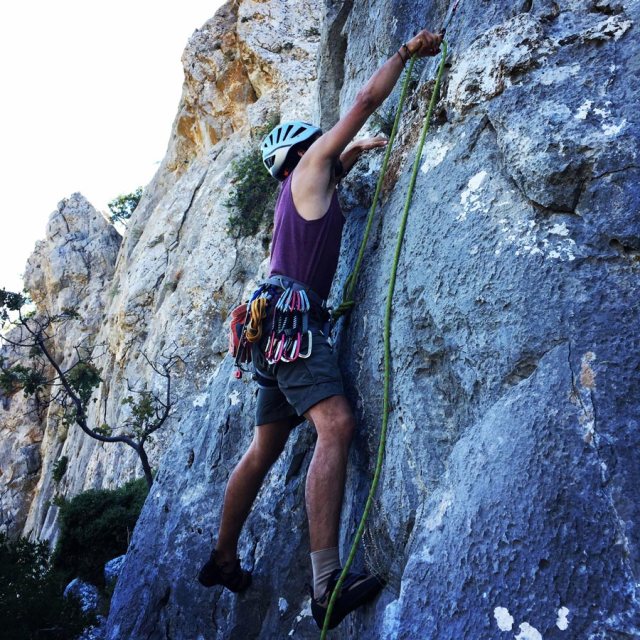



Climbing in the Caves of Franchthi
Franchthi cave or Frankhthi cave (Greek: Σπήλαιον Φράγχθη) is a cave overlooking the Argolic Gulf opposite the village of Koilada in southeastern Argolis, Greece. The cave was occupied from the Upper Paleolithic circa 38,000 BCE (and possibly earlier through the Mesolithic and Neolithic periods, with occasional short episodes of apparent abandonment. Last occupied around 3,000 BCE (Final Neolithic), it is one of the very few settlements in the world that shows nearly continuous human occupation for such an extended period of time, and is one of the most thoroughly studied sites from the stone age in southeastern Europe.
Read detailed guide about climbing in the Caves of Franchthi here:
An enormous series of caverns just above the sea, with large openings allowing enough light to climb by. At night the area is illuminated giving a superb climbing experience. Apart from being worth a visit in their own right some of the climbing here is outstanding and naturally, when it is raining, this is the place to be with some entertaining and bizarre climbing in the 20m deep crevasses under the floor. The potential for enormous roof climbs is obvious but hardly tapped. Karsten Oelze has shown the way with his recent efforts, but there is plenty more to do.
Outside the cave on the cliffs above the beach are 8 routes which we have cleaned and partly drilled but not yet bolted. With a few nuts or a toprope they give some good sport in the lower grades. The highpoint of a visit here are the routes in sector Last Exit, grade 6 climbing at its best.





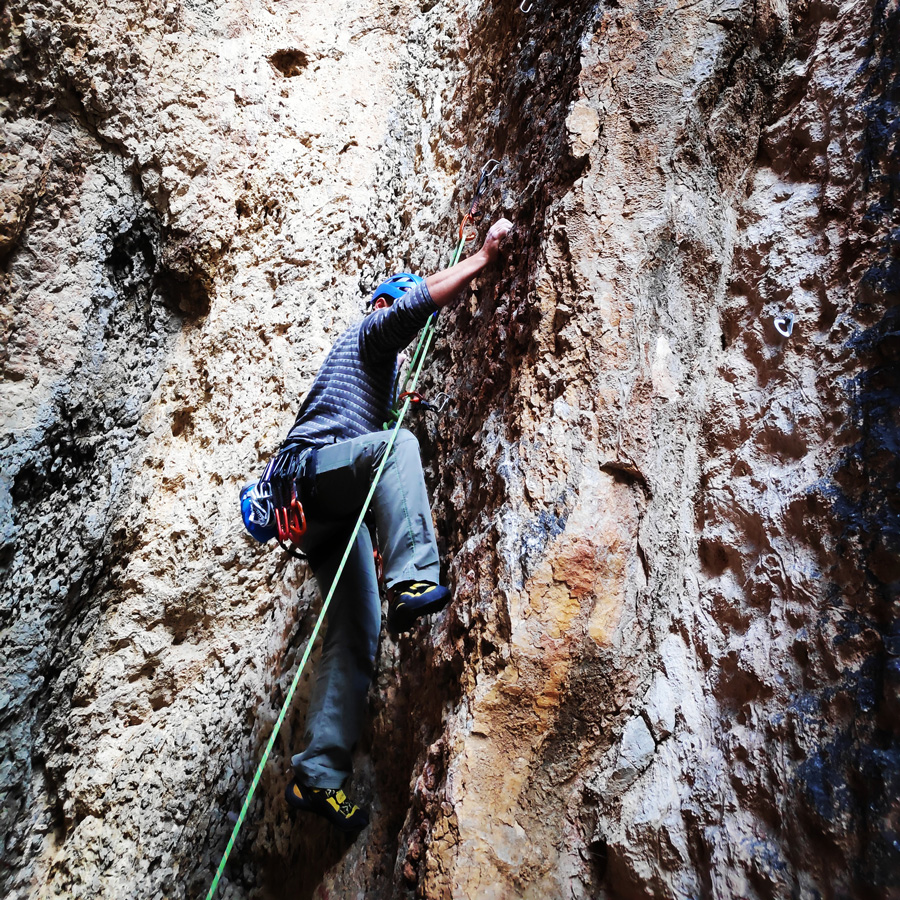

Climbing in Rock of Ages
A nice little cliff in a pleasant setting this is a small ravine with, by our standards, lush vegetation, trees and some good, if rather different, climbing.
One of the few cliffs in the Argolis that offers easy tufa climbs with the continuously overhanging Mr Cool at 5c being one the highlights, albeit a rather strenuous one! Other highly enjoyable if rather unusual routes include Dance With Monsters and the weird Pull Of The Sun which climbs up inside the cleft splitting the cliff, a real expedition.
The first sector, The Seven Dwarves has seven mini routes which are normally shaded, sector Fairy Tale has some medium length routes which tend to require more arm strength than is usual in Argolis. The main wall offers routes up to 30m with room for another 4 or 5. In the surrounding valleys are plenty of cliffs offering the chance to put up about a thousand new routes. An excellent cliff for chidren to play at the base in the shade of the trees, but only a few routes for them to top rope.

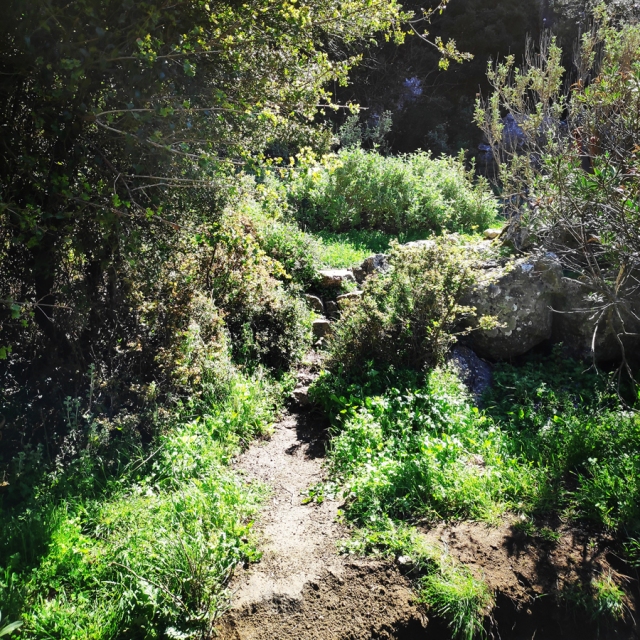
Season: All year but in the winter there can be a cold wind here. In summer there is always some shade but the main wall is in the sun after about 12 o’clock.
Water: There is a spring higher up the ravine that the goats use.
Camping: A great spot in the trees at the foot of sector Seven Dwarves, otherwise anywhere in the hundreds of square km of mountain.


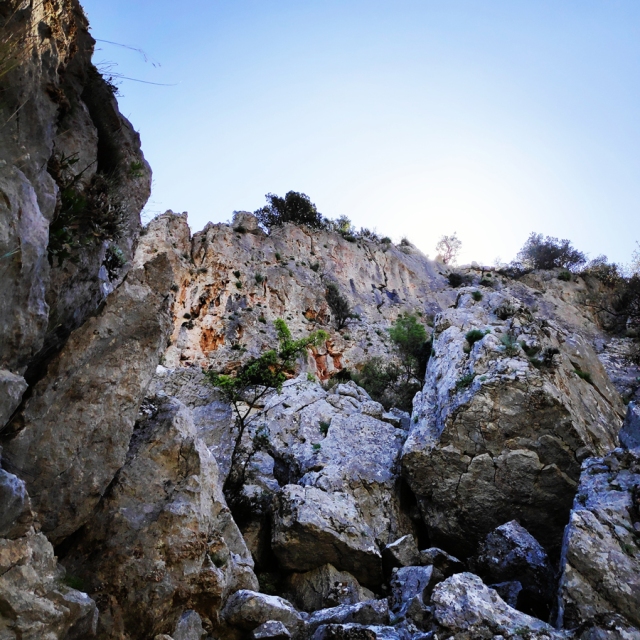
Climbing in Dardiza
This is a tiny crag bolted by Hans and Jeannette Weninger and one could also consider as a good location for bouldering. In the south face of the rock, there are two routes (George and Filia), instead, the rest of the rock is unexploited for the time being.
Read detailed guide about climbing in Dardiza here:
On the west face of the crag, there is potential for few more routes, but all route would be maximum 12 meters high.
Crag location: 37.410559, 23.279172
Monsters of the Wind | Climbing the South-West Ridge of Mount Ortholithi
“Monsters of the Wind” (IV+/V-, 500 m.) follows the south-western ridge of Mount Ortholithi, offering an atmospheric climb overlooking the Saronic Gulf and Ermionida. The route can be described as an “adventure route” with great potential for free route selection. The route also does not present any difficulties in terms of safety with the use of temporary protection.

Read detailed guide about climbing the “Monsters of the Wind” route here:
Approach
From Athens one needs to drive towards Epidavros and from there should follow the road to Ermionida. Just after Trachia village, should follow the road to Karatzas village and from there to Choriza.
Total distance from Athens: 150 km
About 2 km before arriving in Choriza ( 37.520145, 23.233478 ), there is a dirt road where we can leave the car and start the approach hike.
The approach hike is an easy hike of about 10 minutes.


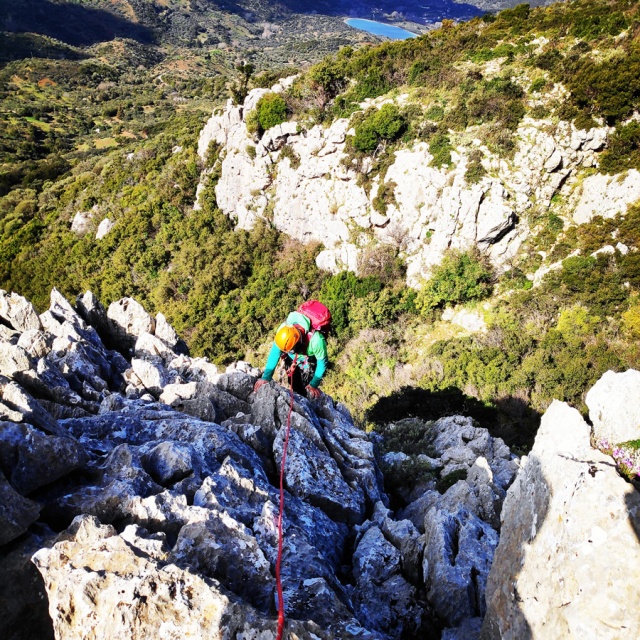
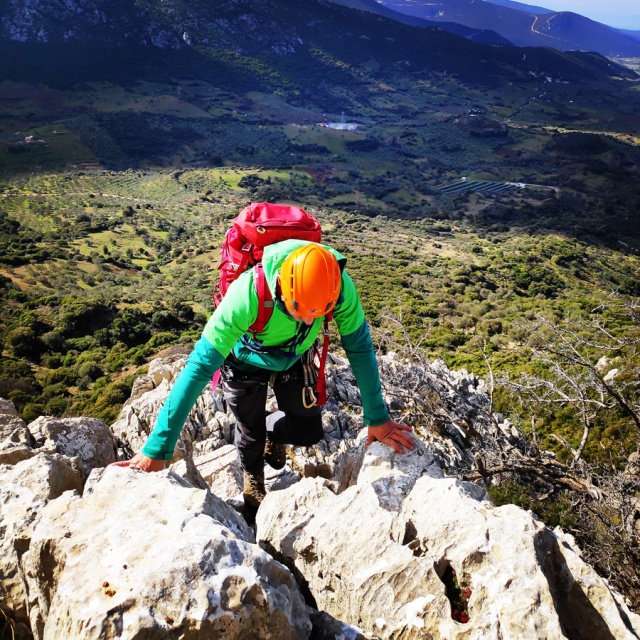
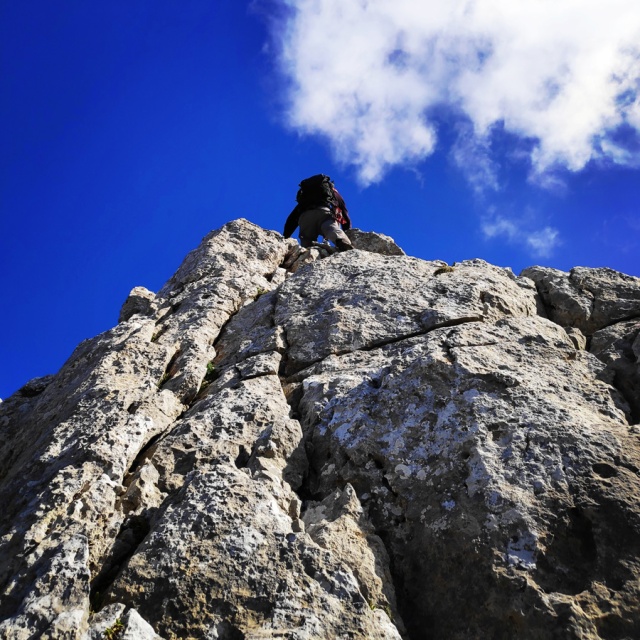


Climate of Ermionida
The climate in Ermionida is warm and temperate. There is more rainfall in the winter than in the summer, though the precipitation is minimal throughout the whole year. According to Köppen and Geiger, this climate is classified as Csa. The temperature here averages 18.1 °C | 64.6 °F. Precipitation here is about 487 mm | 19.2 inch per year.
Further Information
This post contains many information regarding the various crags and sectors in the Ermionida region. Should you wish to know more and your have a specific question, we would be pleased to try to help you out.
You can contact us, via the contact page.
In case you would like to do enjoy some hiking in between climbing, feel free to check out the following posts:
Below: This map marks all the mountaineering adventures that have been featured on Olympus Mountaineering so far, including several Sport climbing crags – Select full screen to expand, zoom in for more detail, or click on a marker for a link to the post.
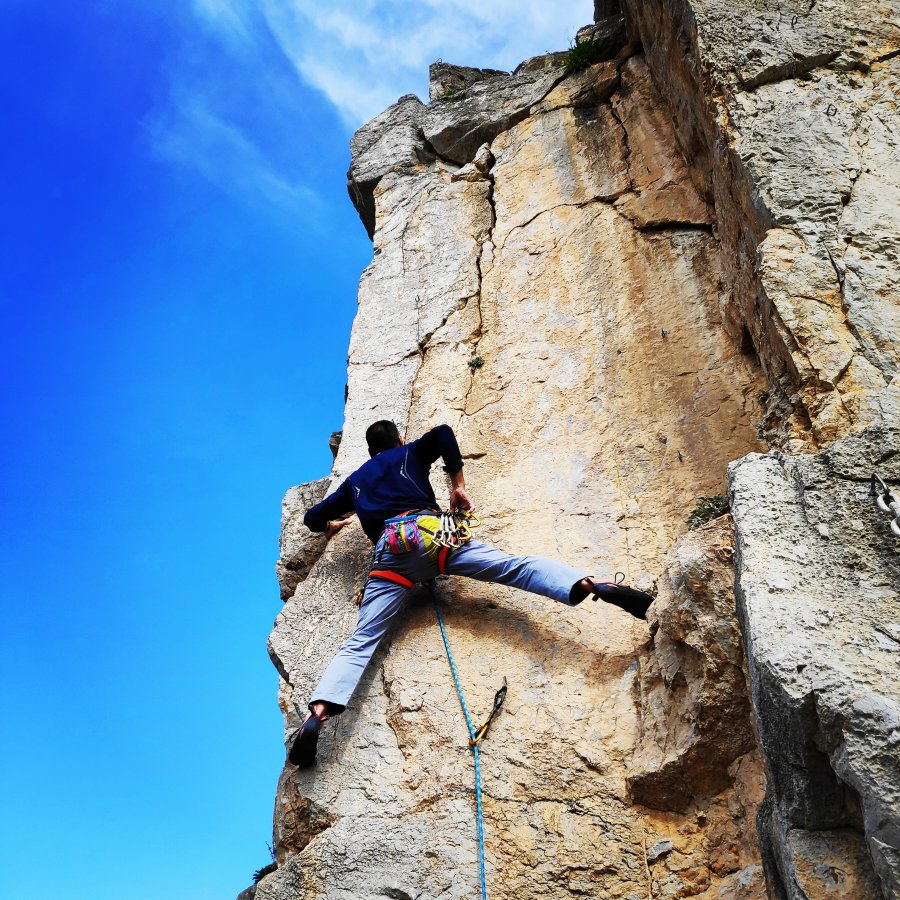

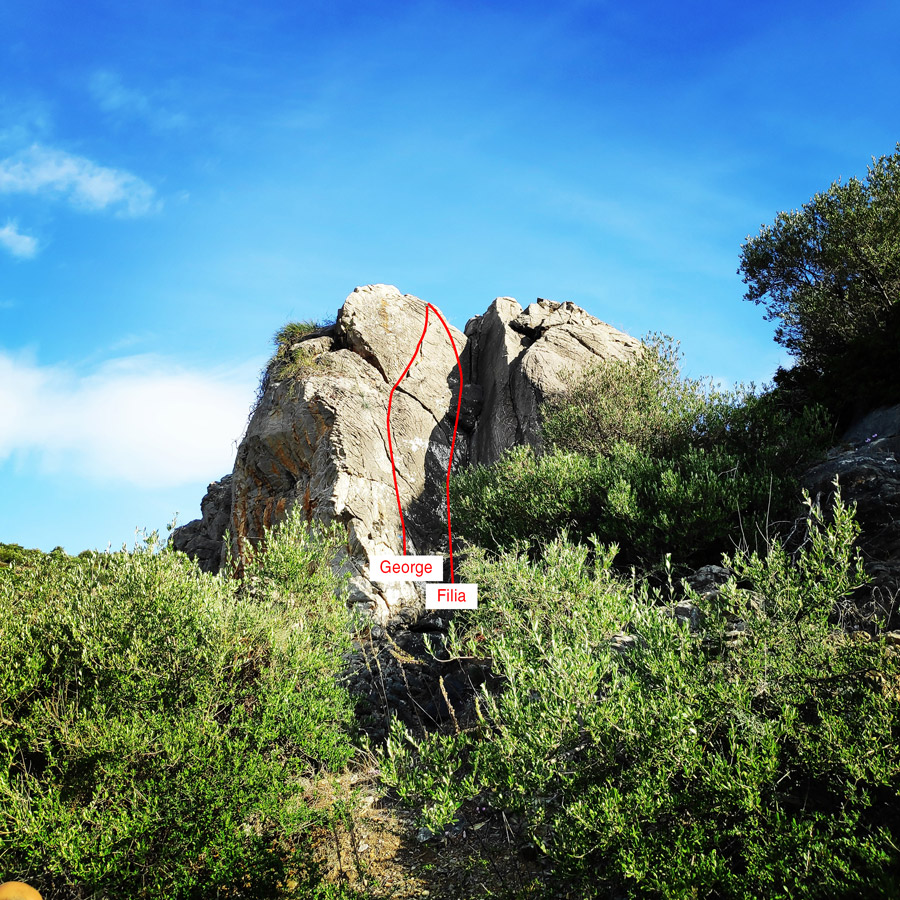
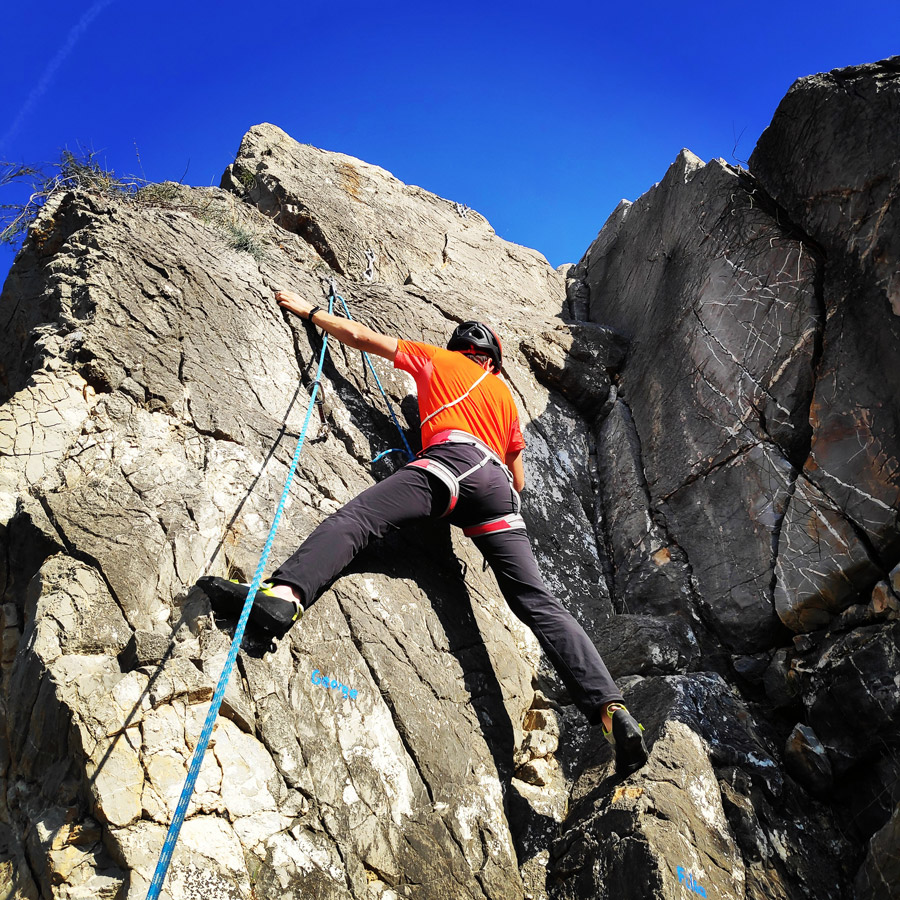



These look like some beautiful areas for climbing. Who wouldn’t want to see glimpses of the ocean along the way? I love the white walls of the Didima climbing crag.
LikeLike
It is a very nice area with plenty of climbing crags and plenty of beaches for relaxing after climbing.
In addition, it is a great location for the winter season too, because in the region of Ermionida the sun is shinning almost on daily basis.
Thanks for the comment.
LikeLiked by 1 person
Another great post! Such beautiful photos!! I love the views! You look so confident just climbing on up!
LikeLike
Thank you for your kind comment and for visiting again the blog.
This area is nice, thus the nice photos too.
Again, thanks for the visit and for taking the time to read through the post.
LikeLiked by 1 person
I am glad for posts like yours, they cheer me up through these Covid times! Nice to see other areas since we are not doing much these days!! Stay safe and healthy!!!
LikeLike
I’m very pleased to know that.
Indeed, 2020, was not the easiest year and we have been very limited. In fact, here in Greece, we are in the 2nd Lockdown and most probably, we are going to be during the whole winter too.
This means, during the short Greek winter will not be easy to go for winter mountaineering activities.
Stay safe and healthy too.
LikeLiked by 1 person
What a great climbing area. Such a variety in rock between the crags. And lovely views too 🙂
LikeLike
Thanks for the kind comment. The area offers also plenty of trad climbing routes. In the future I might dedicate a post for such routes.
Again, thanks for visiting the blog.
LikeLiked by 1 person
Great photos and lots of good detail. The Castle of Thermesia looks both beautiful and daunting—holdless indeed!
LikeLike
Thank you for visiting the blog and for taking the time to read through this article.
Castle of Thermisia, is a very nice location for sport climbing which offers some nice hard routes and lovely view towards the bay of Hydra.
LikeLike
Great content 🙂 Thank you
LikeLike
Thank you for taking the time to read this post and for your kind comment.
LikeLike
BEautiful and very inspirational to keep climbing up!
LikeLike
Thank you for your kind comment and it’s a great compliment to know that you found this post inspirations. Thanks
LikeLike
Pingback: Climbing in Rock of Ages – Ermionida – Argolis – Greece – Olympus Mountaineering
Pingback: The Long Run IV+/V- UIAA 900 m.| Climbing the South-East Ridge of Mount Ortholithi – Olympus Mountaineering
Pingback: Climbing in Charamos Crag – Kandia – Argolis, Greece – Olympus Mountaineering
Pingback: Climbing in Petrogerakas Crag – Ermionida – Argolis – Greece – Olympus Mountaineering
Pingback: The Ultimate Guide of Trad Climbing in Ermionida, Argolis – Greece – Olympus Mountaineering
Pingback: Ermionida – Didyma and Katafiki Canyon | RockAroundTheWorld